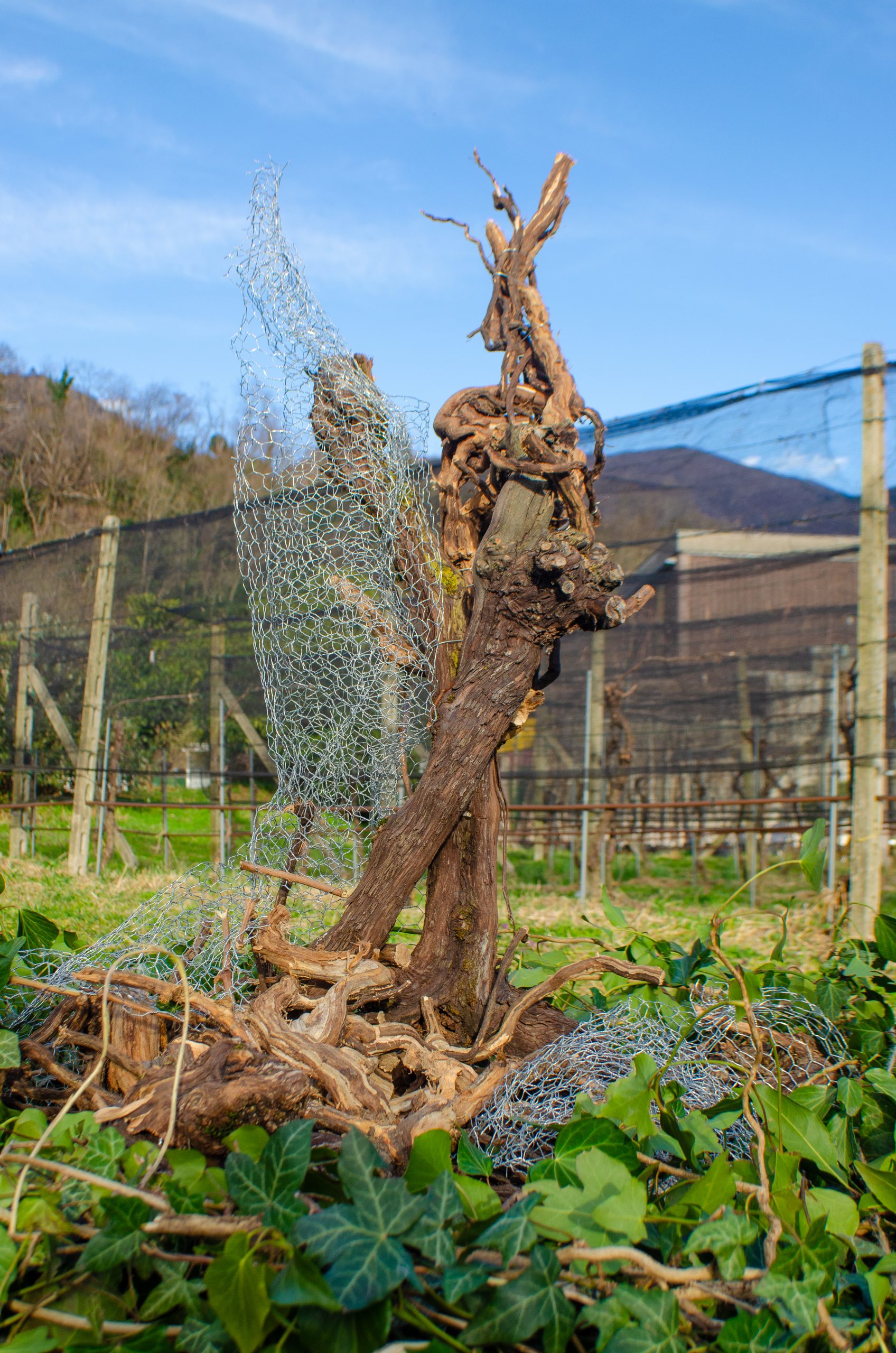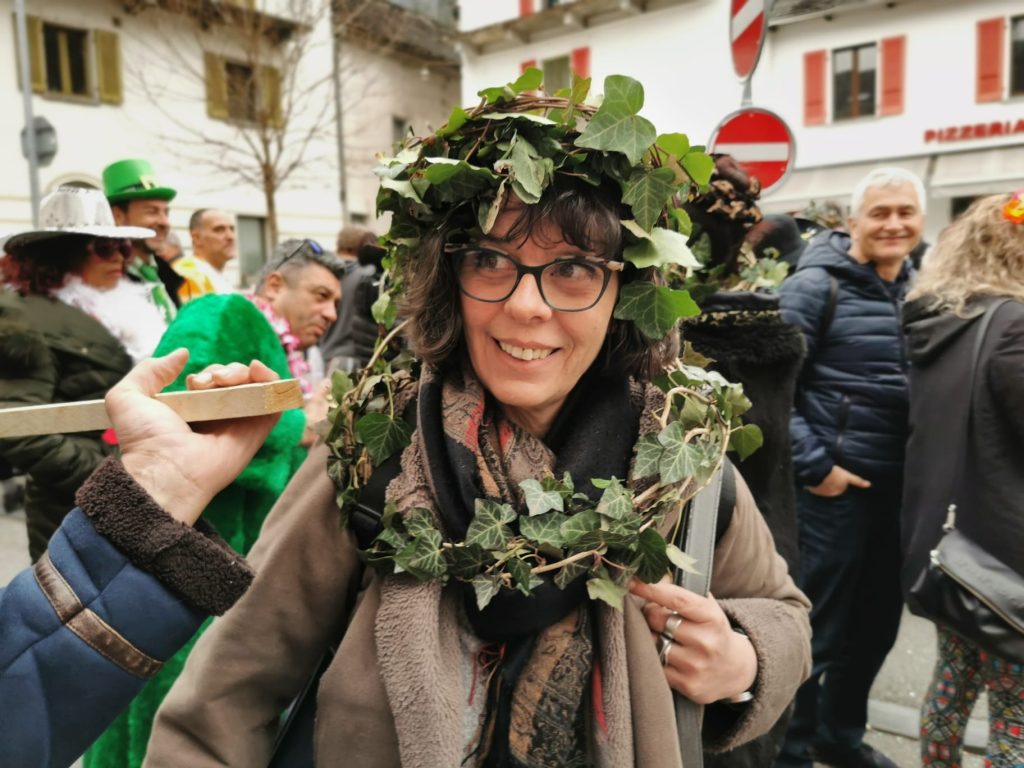A case for a widespread and participatory “image in (perpetual) motion” art
Then suddenly he freed my hands
and my arms became wings,
when he asked me:
“Do you know summer?”
for one day, for one moment,
I ran out to see the color of the wind.
We really flew above the houses,
past gates, kitchen gardens,
streets then we slid down among valleys
in bloom where vines embrace olive trees.
We touched down there, where the day gets lost
looking for itself on its own,
hidden among the trees”
Il sogno di Maria, Fabrizio de Andrè

When the CSRP Institute, with the support of Pascal Mayor, initiated the campaign to fund the work of creating Dionysus (or Bacchus as otherwise known) they were simply fascinated by Mahdi El Ghomri’s decidedly site-specific technique of creation capable of storytelling through compositions of branches and leaves; however, they did not imagine that the bust of vine trunks, ivy leaves, and remnants of wire mesh created by El Ghomri was also a composition of disciplines, stories, and people assembled around a representation of Bacchus contained in a photograph, a witness to a moment that has survived history.
The archaeologist Massimo Izzo, who was asked his opinion on the sculpture, perceived the knobby trunk of the Dionysian vine joined by the knots being capable of representing the importance of the vine, wine and symbols of the god perfectly within the historical context. In “Dionysus 1900 – 2024,” time takes shape and tells of the flowering valleys whose vines were invaded by powdery mildew and attacked by phylloxera, an aphid of North American origin that plagued those territories from the late 1800s until the 20/30s of the 1900s. As also in the Langhe [Piemonte, Italy], the territory where the writer comes from, the olive tree was one of the crops that replaced that of the grapevine. Almost as if the Apollonian had taken revenge with incorrect chemical weapons against the Dionysian.
A 1900 “village” photo with the entire (male) citizenry posing to stand testimony as participants of the Carnival in Verscio [Canton Ticino, Switzerland], a bacchanalia with little wine in that unhappy year for the god Dionysus.





How did this carnival come to life? How could one have arrived at a reenactment of that photo that would go beyond that photo and reestablish a proper dialectic between Dionysian and Apollonian, between the rules of one and those of the other?
Certainly by running to see the color of the wind, as in Fabrizio de Andrè’s song, or as in a Hayao Miyazaki film.
But how does it take off to become a tangible experience beyond theory and dreaming?
If this text were an interview, one would have to ask the artist how he became a casting manager, but also a producer, and also a director, and how the collaborations were embedded, first and foremost with Jelena Sucic, but then with the myriad of people of the region and the production realities of that area. So much has changed in the last 124 years, a change that perhaps the metal wire nets that wrap around the bust of Dionysus stand as a testament to.
Those who participated in the (no longer all-male) carnival could be asked why the remaking of that photo was not simply the point of arrival, but a testimony to a transition and perhaps a new beginning, as was that original Pedemontese Carnival in 1900. Imagining it is probably because the Carnival of the rediscovered Bacchus could not stop there, plastered in Apollonian, frozen joy. The Dionysian Carnival has its own rules, shared as every anarchist knows, rules that lead to its necessary dissolution in order to be reborn in other forms: in this case dispersing in a trance rave “there where the day is lost” to search for themselves hidden in the foliage…
Or perhaps it is more interesting to leave them the beauty of someday being able to tell their story from which other stories will multiply.
We are left to reason and enjoy the ability of an artist who had to go through so many identities in order to leave his own narcissism on one side to metamorphosize it into one that is collective.
23.03.2024
Davide Oberto
(original in Italian)
Translated to English by Brianna Ruland
Brief Bio of Author Davide Oberto
Born in Alba (Italy) in 1970, he moved to Turin in 1989 where he studied Philosophy, Human Sciences and History of Cinema at the University of Turin. In 1999 he began his collaboration with the Torino Film Festival, where in 2005 he became curator of the Italian competitions (short films and documentaries). Three years later he created a new section dedicated to international documentaries in an attempt to introduce the most interesting and relevant films in Italy from a very specific cinematographic perspective: TFFdoc. From 2002 to 2009 he was programmer of From Sodom to Hollywood – Torino LGBT FIlm Festival for which he also curated several retrospectives. From 2015 to 2018 he was director of Doclisboa with Cíntia Gil and curated in 2019, again for Doclisboa, the retrospective dedicated to Jocelyne Saab. In 2022 he left the Torino Film Festival and now lives in Berlin as a freelancer trying to imagine new paths.
